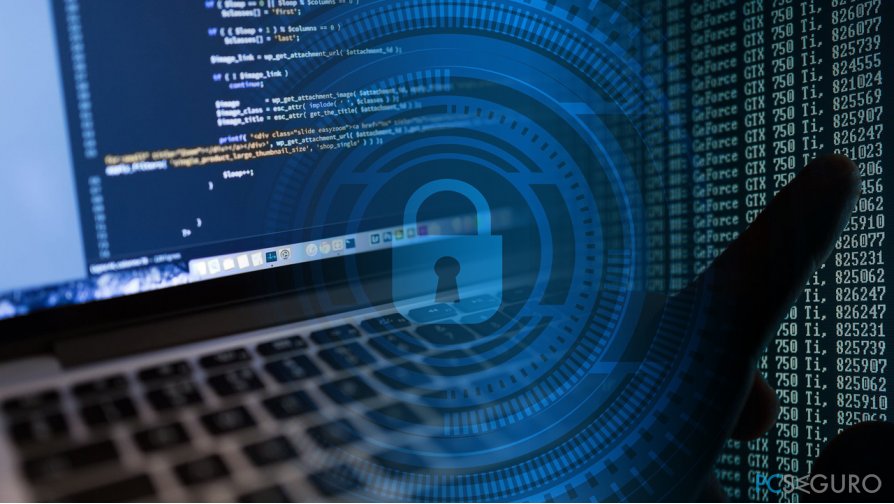Data Backup and Recovery Importance and Implementation
What are data backups and recoveries and why is it important?
In technical terms, data backups are a process of implementing technologies to make copies of your most valuable files at particular time intervals. This process can prevent a variety of unexpected event courses that could result in permanent data loss – cyber attacks, human error, natural disasters, and other reasons.
Modern society relies on various pieces of information and is largely digitized – storage on servers, hard drives, NAS and other types of storage devices. Data has become extremely important and its retention is one of the most crucial aspects of any business. While some companies still store essential documents on hard drives, most have moved to digital backups and disaster recovery practices – these advancements ensure that businesses won’t suffer financial losses or market share.

Data Backup and Recovery Importance and Implementation
The value of corporate data is incalculable for any business, as its loss can reveal secrets, marketing strategies, compromise customer privacy, and much more. Unfortunately, there are many different ways in which this information can be lost, including natural disasters, human error, malware attacks, etc. Time and time again, government institutions, businesses, and corporations fall victim to those unexpected circumstances, costing them millions of dollars in damages and loss of customer trust.
Data retention and recovery are implemented differently between home users and businesses, due to numerous reasons. Corporations use security teams dedicated to establishing and maintaining regular backups. Home users are less organized, and many realize the importance of backups only when they encounter an issue related to the loss of their most valuable data. In addition, users do not have the financial resources to maintain expensive backup processes.
That is why home users should make sure that they prepare backups of their files so that they can avoid permanent loss. In this article, we’ll explore data loss, data recovery, retention methods, and more.
How can data be lost?
Everyone knows how to keep data on computers – they download it from the internet, create new files through programs, inject external devices such as USBs, etc. Knowing how files can be lost is one of the main factors in understanding why proper backups and recovery practices are important.
All data stored on a computer can be destroyed in one way or another – below are some examples of how any event can jeopardize the security of your most important data.
Accidental data loss and human error
Machines, while not perfect, are created in such a way that errors might simply not occur when no external factors are present. Humans are quite different in this regard; They make mistakes all the time – because of this, there are many different ways in which they can accidentally destroy data on a computer. Here are some examples:
- Accidentally damaged computer components, for example, spilling a coffee on top of the motherboard or other vital hardware parts.
- Loss of your portable device that stores important data – phone, laptop or tablet.
- Failed to detect low hard drive space and loss of documents before they are saved to the local drive.
- Deleting files without sending them to the recycle bin.
Software and hardware failures
It’s no secret that computer components wear out over time and need to be replaced in order for the computer to operate smoothly. In some cases, hardware parts such as HDDs or SSDs may simply fail due to factory errors or other failures during their production process. Although the device can be replaced with the help of warranty, the data stored inside can be lost forever.
Natural hardware failures aren’t the only ones that can result in data loss. In some cases, components can be mishandled – placed on the ground, stored in incorrect conditions and many other cases. Hardware failures account for more than 40% of the reasons why data loss occurs.
Software glitches can also result in data loss – programs can crash due to various reasons and fail to save the most recent copies to a worksheet.
Device theft
The era where information could only be stored on desktop computers is long gone, as portable devices such as tablets, mobiles and laptops have entered the scene. According to statistics, more than half of users are now connected to the internet through their phones and other portable devices.
Unfortunately, these mobile devices can also be stolen, even if you live in an area where these incidents rarely occur. On the other hand, you can simply forget your phone on a bus, for example.
It is also important to mention that burglaries at home and in offices also happen – criminals take the most valuable items. Computers and other storage devices can then be sold on the black market. Considering this, sensitive information can be compromised by cybercriminals in this way.
Malware Infections
Cyber infections are among the most prominent types of criminal attacks. This is not surprising, considering that data is one of the most important assets for a company or government institution. One of the most prevalent motives for criminals is money, and there are many ways they can benefit financially from infecting corporations or home users with malicious software.
There are many different types of malware that can be used for different malicious purposes, some of which include:
- Remote access Trojans;
- Rootkits;
- Worms;
- Cryptominers;
- Spywares, etc.
Although any type of malware can result in file destruction and data loss, one of the biggest threats is ransomware. There have been plenty of ransomware incidents recently and while some of the actors have gone for the “big shots” others have focused on home users, asking them for payments that can reach up to more than $1000.
Natural Disasters
Natural disasters, while uncommon, can occur and inflict significant damage not only to furniture, homes, or offices, but also to computers and mobile devices. The frequency and likelihood of a natural disaster occurring is highly dependent on your location and can include things like earthquakes, hurricanes, tornadoes, or volcano eruptions.
That this happens is really extreme, although if you live in an area where natural disasters are not common, don’t forget that there are many other natural factors that are much more common; For example, high or low temperatures, power outages, fires at home, and other problems that can completely destroy your computer or phone.
Digital & Physical Backups
One of the most important steps to remember is that backups should never be stored on the same medium. Essentially, if you’re using two hard drives and one of them is broken, you want to keep a copy of your files on your second drive to prevent data loss. In other words, improperly prepared backups can be completely useless, so it’s important to find the best ways to do them correctly.
There are several ways to make your backups – you can choose to keep them on a physical drive, in remote storage, or use a combination of both.
- Data storage hardware. There are many different devices that can be used for backup and storage; e.g., HDD, SSD, USB, DVD, Network Attached Storage, etc. The usability of these devices is highly dependent on your personal situation and factors such as how much data you want to save, how often you need to renew those copies, or the availability of those components.
Regarding which device to choose, you should immediately disconnect it from the main system; otherwise, the whole process will be completely useless. - Storage on remote cloud servers. Remote storage has become one of the primary ways businesses and organizations store their backups. If you have a large amount of data to store, physical devices may not be best for you, so you should have to buy new ones as soon as they run out of space. In addition, digital backups are much easier to maintain, prepare, and maintain.
When choosing a cloud-based service, make sure it’s trustworthy – the company needs to take the necessary steps in order to protect your files from unauthorized intrusions and keep them encrypted. One of the main disadvantages of digital storage is that it’s not free – the services typically charge a monthly fee.
Data recovery software can save you from difficult situations after data loss
Precautions are extremely important when it comes to data. Although many companies and corporations have already learned an important lesson regarding data loss and compromise, home users still go unnoticed in this regard. That’s why ransomware like Djvu comes in and extorts thousands of dollars from home users all over the world, as they don’t want to lose their valuable files.
One of the misconceptions, however, is that security programs should return encrypted files to normal. Unfortunately, this might not be so true, as the data will remain encrypted even once a malicious payload is removed (if present). Because of this, many users are desperate to get their files back without having to pay the criminals. The easiest way to recover data is through backups.
Since most users don’t care about their backups, they keep looking for other methods to recover their lost files. One of the best solutions is to use data recovery programs. Although this is not highly effective with files encrypted by ransomware, it is a good solution in all other cases.
If you are looking for a good solution to recover files without backups, we recommend using Data Recovery Pro – its innovative and effective technology will help you recover files from external devices or formatted disks and even restore emails and their attachments. The app guides you step-by-step through the entire process, has a word search function, and provides previews of music files, images, and videos.
What types of games do you offer for download?
We offer a wide variety of games catering to different preferences and platforms. You can find everything from action-packed shooters and immersive RPGs to casual puzzles and indie gems. Our library includes games for PCs, consoles, and mobile devices.
Are the downloads free, or do I have to pay?
We offer free games. Some titles are available for free download.
Is it safe to download games from your website?
Yes, absolutely. We prioritize the safety and security of our users. All games available for download on our website undergo thorough screening for malware and viruses. Additionally, we partner with trusted developers and publishers to ensure that our users have a safe gaming experience.
How do I download games from your website?
Downloading games from our website is simple. Just browse through our library, select the game you want, and click on the download button. Follow the on-screen instructions to complete the download process. Depending on the size of the game and your internet speed, it may take some time to download.
Are there any age restrictions for downloading games?
Yes, some games may have age restrictions due to their content. We adhere to age ratings provided by official rating boards such as the ESRB, PEGI, and others. Make sure to check the age rating of each game before downloading to ensure it's suitable for your age group.
Can I share downloaded games with friends or family?
Sharing downloaded games with others may violate copyright laws and licensing agreements. We encourage our users to respect intellectual property rights and refrain from unauthorized distribution of downloaded games. If your friends or family members are interested in a particular game, encourage them to download it legally from our website.












